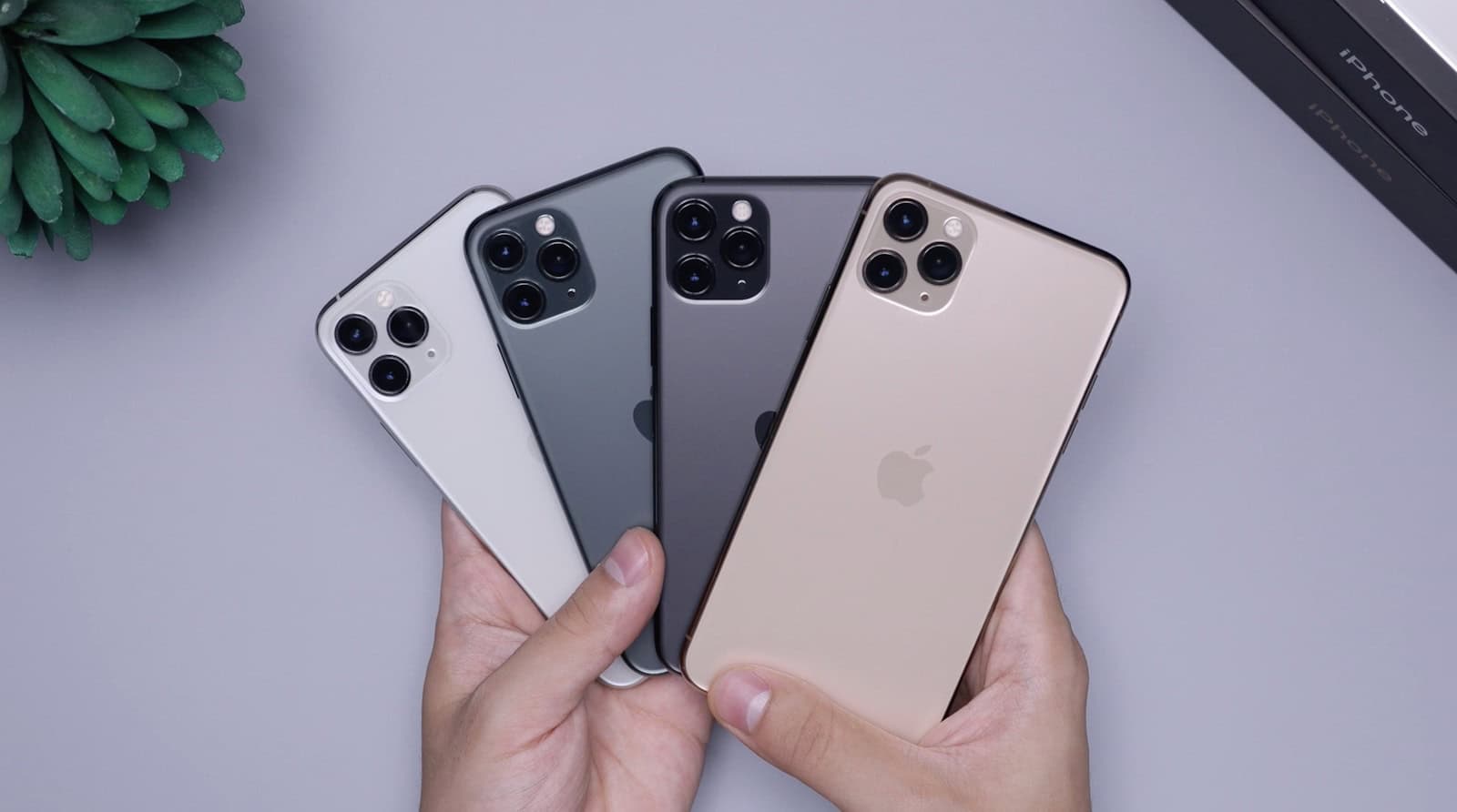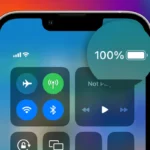When facing an ever-growing lineup of iPhones, choosing the right one can be a touch and complicated decision with a lot of different variables. You have to consider features, size, and price – just to start out. From there you have to factor things like Apple updates (how long with the model you go with still be supported) and warranty eligibility. For example, buying an iPhone X or 8 series in 2024 no longer makes sense because those won’t be getting new iOS updates. This means that newer models like the iPhone SE (2022) and iPhone 13 are not only more technologically advanced but also more future-proof.
The flagship iPhone 15 Pro Max is the current ‘cream of the crop’ model with a powerful A17 chip and advanced camera system, making it a top choice for those seeking the latest and best technology. But that will cost you the most amount of money. Each iPhone model offers unique advantages in camera technology, storage capacity, and battery life…and each has a different cost for those perks.
Storage options and camera specifications are two other important factors when choosing an iPhone. For instance, the iPhone 13 has a dual-camera setup and starts with a larger storage capacity compared to the single-camera and lower storage options of the iPhone SE. Choosing a model is less about finding the best iPhone in general and more about finding the best iPhone for your specific needs.

Choosing the Right iPhone in 2024: A Comprehensive Guide
Apple’s iPhone 15 lineup offers a phone for everyone, whether you’re a power user or on a budget. However, older models like the iPhone 13 and 14 are still viable options, especially if you’re looking to save some money.
iPhone 15 Series: The Latest and Greatest
| Model | Price (Starting) | Key Features | Who It’s For |
|---|---|---|---|
| iPhone 15 | $799 | A16 Bionic chip, Dynamic Island, 48MP main camera, USB-C | Most users seeking a balance of features and affordability |
| iPhone 15 Plus | $899 | Same as iPhone 15 but with a larger display and battery | Those who want a bigger screen and longer battery life |
| iPhone 15 Pro | $999 | A17 Pro chip, titanium frame, Action button, periscope telephoto camera | Power users and photography enthusiasts |
| iPhone 15 Pro Max | $1199 | Same as iPhone 15 Pro but with a larger display and battery | Those who want the best of the best and a larger screen |
Older iPhones: Still Worth Considering
- iPhone 14/14 Plus: Very similar to the iPhone 15/15 Plus, but with the older A15 Bionic chip. A good option if you can find them at a discount.
- iPhone 13/13 Mini: Still a great all-around phone with excellent performance and battery life. The Mini is perfect for those who prefer a smaller device.
Choosing the Right iPhone for You
Consider your needs and budget. If you want the latest features and don’t mind spending a bit more, the iPhone 15 Pro or Pro Max are excellent choices. If you’re looking for a more affordable option, the iPhone 15 or 15 Plus are great values. And if you’re on a tight budget, don’t overlook the older iPhone 13 or 14.
iPhone Comparison Table for 2024 (Including Older Models)
| iPhone Model | Pros | Cons | Who Should Buy |
|---|---|---|---|
| iPhone 15 | Affordable, Dynamic Island, 48MP camera, USB-C | Not as powerful as Pro models, no telephoto lens | Budget-minded users who want a modern iPhone |
| iPhone 15 Plus | Larger display, longer battery life | More expensive than iPhone 15 | Those who prioritize screen size and battery |
| iPhone 15 Pro | Powerful A17 Pro chip, titanium frame, Action button, periscope telephoto camera | Expensive | Power users and photography enthusiasts |
| iPhone 15 Pro Max | Same as iPhone 15 Pro, larger display, longer battery life | Most expensive iPhone | Those who want the absolute best and biggest iPhone |
| iPhone 14/14 Plus | Similar to iPhone 15/15 Plus, potentially cheaper | Older chip, may be harder to find | Bargain hunters who don’t need the latest features |
| iPhone 13/13 Mini | Excellent performance and battery life, compact size (Mini) | Older model, no Dynamic Island | Those who prioritize value and compact size (Mini) |
| iPhone 12/12 Mini | Good performance, Super Retina XDR display | Older chip, no MagSafe | Budget-conscious buyers who want a good all-around iPhone |
| iPhone 11 | Affordable, decent performance, wide-angle camera | Older model, no 5G | Extremely budget-conscious buyers or those needing a backup phone |
| Older iPhones (XS, XR, etc.) | Very affordable, may still function well | Outdated technology, limited software support | Those on an extreme budget or nostalgic users |

Additional Tips
- Storage: Choose a storage capacity that suits your needs. If you take lots of photos and videos, you’ll want at least 256GB.
- Carrier deals: Check with your carrier for any special deals or promotions on iPhones.
- Refurbished models: Consider buying a refurbished iPhone to save even more money.
No matter which iPhone you choose, you’re sure to get a great device with top-notch performance and features.
Key Takeaways
- Finding the right iPhone depends on balancing features, size, and budget.
- Newer iPhones offer better future-proofing with ongoing software support.
- Consider camera capabilities and storage options when selecting a model.
Choosing the Right iPhone Model
Selecting the ideal iPhone hinges on understanding one’s budget and needs while considering the diverse array of models and their features. This encompasses evaluating camera and battery performance in addition to scrutinizing processor prowess and screen quality.
Assessing Your Budget and Needs
When contemplating which iPhone to purchase, the first step is to determine the budget. iPhone models range in price with options like the more affordable iPhone SE to the higher-end iPhone 15 Pro Max. Features vary between models. For those seeking value, the iPhone SE offers essential iOS performance at a lower cost. Conversely, individuals desiring leading-edge technology may aim for the Pro models which command a higher price for premium features.
Comparing iPhone Models and Features
Each iPhone caters to different preferences. The iPhone 15 series, inclusive of iPhone 15, iPhone 15 Pro, and iPhone 15 Pro Max, offers the latest technology like A17 chips for advanced gaming. Meanwhile, the iPhone 13 remains a strong contender, balancing price and capability. The table below lists notable differences:
| Model | Processor | Display Size | Camera | USB-C | Price Point |
|---|---|---|---|---|---|
| iPhone SE | Older A-series | Smaller | Single rear camera | No | Cheaper |
| iPhone 13 series | A15 chip | Up to 6.1″ | Dual/Pro models have triple setup | No | Mid-range |
| iPhone 15 series | A17 chip | Up to 6.7″ | Pro models have three lenses + LiDAR | Expected | Higher |
Considering Camera and Battery Performance
The Pro models typically feature the best cameras and batteries. The iPhone 15 Pro Max shines with its 5x optical telephoto sensor, ideal for photography enthusiasts. In terms of battery life, it often leads with the longest endurance, a critical factor for many users. Those with less focus on photography might find the standard iPhone 15 more than sufficient.
Evaluating Processor and Screen Specifications
Regarding screens, size matters but so does quality. The Pro models display more vibrant colors and deeper blacks. Performance-wise, the newest iPhone 15 Pro models have the A17 Pro chip providing a snappy experience. For everyday use, older models like the iPhone 13 with the A15 chip still perform well. It boils down to how much one values the extra screen real estate and processing speed for tasks like gaming or high-resolution video playback.
Upgrading and Accessorizing Your iPhone
When you get a new iPhone, you can make the most of your old device by trading it in or selling it. Accessories also enhance your experience. This section guides you through these steps.
Maximizing Trade-in and Reselling Old iPhones
Trade-ins with Apple offer you credit towards your new purchase. If you have an older model, like an iPhone 13 or 14, they still hold a good value. Sometimes you can get more money selling it yourself. Be sure to check various options before trading in. Also, clear your personal data before handing it over.
Choosing Accessories and Cases
New iPhones benefit from the right accessories. Cases protect your phone while MagSafe accessories add functionality. For iPhone 15, you’ll find cases that match its design. Look for ones that support MagSafe to easily snap on and off. Apple Watch and AirPods also pair well with iPhones for a complete set of gadgets.
Setting Up Your New iPhone
Setting up a new iPhone is simple. Transfer data from your old iPhone quickly. Follow the on-screen instructions. New options like the Dynamic Island on some models change how you interact with your phone. Don’t forget to explore the telephoto lens and other new features. They can change the way you use your iPhone.







